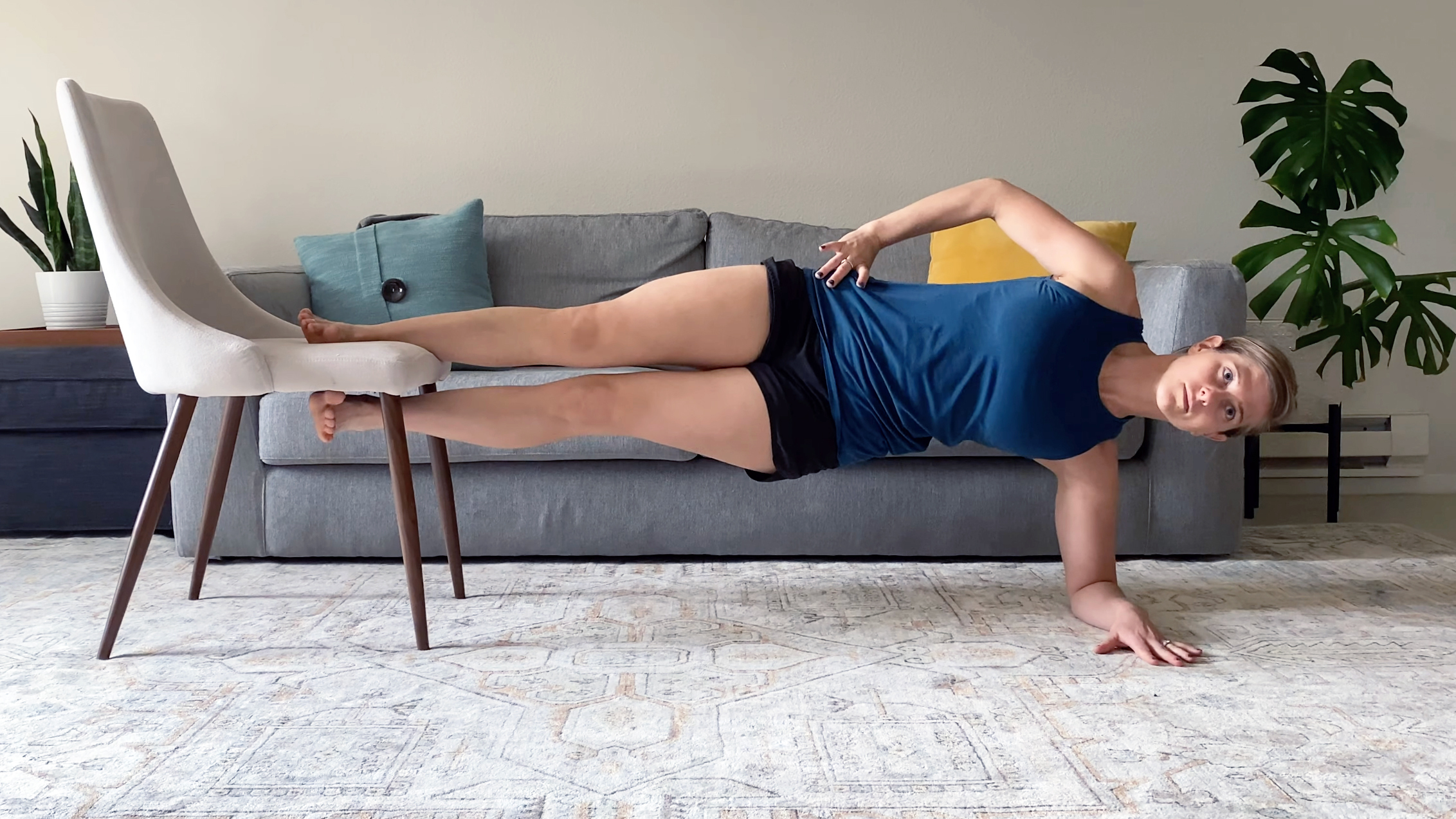I did a two-minute Copenhagen plank every day for a week — here's what happened
I tested my core strength and felt the burn

Bored of holding a standard plank? Say hello to the Copenhagen Plank. No, it’s not exclusively done in the capital of Denmark, instead, it’s a style of plank that works the core but also the inner and outer thighs.
It’s a side plank, but the advanced version. And boy, is it advanced. This one has some huge benefits when it comes to the core. We know by now that a stronger core is essential in everyday life, as well as other sports and exercises, to help prevent injury, maintain posture, and protect the spine and other joints in the body.
I decided to do a two-minute Copenhagen plank every day for a week. That’s 60 seconds on each side. Read on to find out how I got on.
What is a Copenhagen plank?
So you know what a regular plank is: resting the body on either your palms or your forearms, and your toes, maintaining a straight plank-like position. This targets the entire core, as well as the back and arms.
Then there’s the side plank, which involves resting your body, on its side, one one forearm and one foot, with the other foot stacked above it. Again, a great core and shoulder exercise, with a specific focus on the obliques, the muscles that run down the side of your core.
The Copenhagen Plank takes things up a notch. It’s the side plank’s older cousin; it works the core, but it also works the inner and outer thighs aka the adductors and the abductors, respectively.
How to do a Copenhagen plank
Let’s start by looking at how to do a Copenhagen plank with perfect form. You’ll need a gym bench, box, or footstool for this move.
Sign up to get the BEST of Tom's Guide direct to your inbox.
Get instant access to breaking news, the hottest reviews, great deals and helpful tips.
- Get into a side plank position, and place the top foot on your gym bench.
- Keep your second foot underneath the bench, in line with the top leg and foot.
- Rest your body on your forearm, lift your hips, and maintain a straight line with your body.
- Squeeze your core and hold this exercise for as long as you can. Aim for 20 seconds to start, then gradually increase this over time.
Here’s more on how to do a Copenhagen plank.
I did a two-minute Copenhagen plank every day for a week — here’s what happened
My obliques burned
A classic side plank is great for hitting the obliques, but the Copenhagen Plank really hits the obliques as these muscles are working extra hard to keep your body stable with all the weight really resting on one leg. Oh boy were they firing up on each side after two minutes in this plank position.
I felt muscles working that I didn’t know existed
A week of the Copenhagen Plank made me very aware of the muscles in my inner and outer thighs. These aren’t muscles that I work that much, so it was humbling to feel them firing up.
A study done on the Copenhagen Plank found that it’s useful for strengthening the hip adductors and the outer thighs and reducing soreness. These inner and outer thigh muscles are vital for lateral-style movements and also help protect various joints in the leg whilst also helping to prevent injury.
A post shared by - Lucy E Gornall - (@lucyelizabethgornall)
A photo posted by on
My shoulders took the strain
Yup, the Copenhagen plank also targets the shoulders. Well, all types of plank target the shoulders as the body rests on arms and feet, typically, however, here, so much weight is resting on one shoulder in this move, that I felt it more than usual.
Personally, I love strengthening my upper body; it helps with so many day-to-day tasks. So the Copenhagen plank is a win-win for me hitting the shoulders and the core.
Did I get more toned? Well…
I’d need to do this for a lot longer than a week to see any major results in the core-toning department, plus, as I like to remind everyone, to see the ab muscles pop you really need to shift any body fat that sits on top of them. Here’s how to calculate your body fat percentage, and why it matters.
I don’t have lots of fat over my abs, but I do have enough to hide the majority of my ab muscles, so I think a little more work would need to be done in that department to see more results from the Copenhagen plank. However, the fact that this plank causes such serious oblique burn, tells me that it’s definitely helping to boost my abs.
I did a two-minute Copenhagen plank every day for a week — should you do it?
Absolutely, yes! You’ll be testing muscles that you may not have even realized existed (see above for my inner and outer thigh burn) whilst also giving your core a serious little workout.
The Copenhagen Plank ramps things up big time and is a huge step forward from a regular side plank as it’s working other muscles, aside from your core. Plus, to keep your body in a straight line, every muscle needs to stay engaged, so your whole body is firing up.
Look, for a bodyweight exercise, this is brilliant. Personally, I will be throwing it into my core regime regularly and I highly encourage you to do the same!
More from Tom's Guide
Lucy is a freelance health and fitness journalist as well as a pre and post-natal personal trainer. Although a sweaty gym session (skipping rope is a must) is her favorite way to ‘relax’, she’s also a fan of bingeing on The Office, snacking on chocolate-coated raisins, and fizz-filled brunches with friends.

